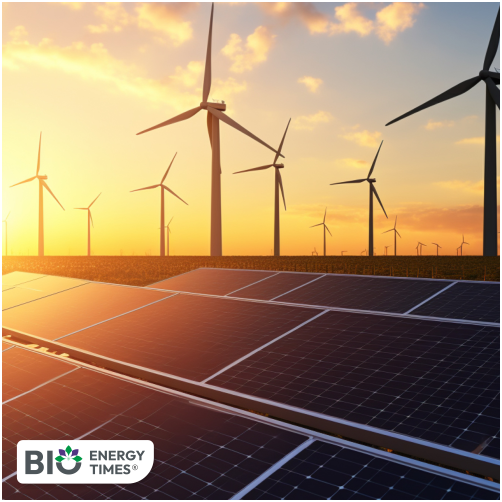Prime Minister Narendra Modi has set a national target for India to achieve net-zero emissions by 2070. In line with this vision, Gujarat has emerged as a frontrunner, achieving significant milestones in renewable energy development and becoming the leading state in India for installed renewable energy capacity.
As of April 30, 2025, Gujarat’s total installed renewable energy capacity stands at 35.16 GW, according to the Ministry of New and Renewable Energy (MNRE). This achievement reflects the state’s deep commitment to sustainability and green economic growth.
Under the leadership of Chief Minister Bhupendra Patel, Gujarat ranks first in multiple renewable energy segments: it holds the top spot for total installed renewable energy capacity (35.16 GW), leads in wind power capacity (13.51 GW), and tops the country in rooftop solar installations (5.31 GW). The state is second in solar power capacity with 19.42 GW and contributes 15.72% to India’s total renewable energy output.
Gujarat’s renewable energy mix includes wind, solar, small and large hydro, and bioenergy. Of the total installed capacity, wind contributes 13,514.68 MW, solar accounts for 19,421.8 MW, small hydro adds 106.64 MW, large hydro contributes 1,990 MW, and bioenergy adds another 129.85 MW.
Gujarat Urja Vikas Nigam Limited (GUVNL) has played a central role in advancing energy storage and integrating renewables into the grid. The company has signed agreements for Battery Energy Storage Systems (BESS) with a combined capacity of 1,192 MW / 4,777 MWh. The state is also evaluating Pumped Storage Projects with a potential exceeding 32 GW.
One notable project is the 35 MW Solar PV installation with 57 MWh BESS at the Kutch Lignite Thermal Power Station (KLTPS). This co-located project optimizes land use and existing infrastructure, enhancing both solar deployment and grid reliability—a model of Gujarat’s innovative clean energy strategy.
In the fiscal year 2024–25, Gujarat generated approximately 32,790 million units (MU) of electricity from renewable sources, accounting for over 22% of the state’s total power consumption of 1,46,467 MU. The state added 5.9 GW of new renewable capacity during this period, growing from 27.46 GW to 33.39 GW. This includes 4.95 GW from solar and nearly 955 MW from wind.
GUVNL’s forward-looking initiatives have also made renewable energy more accessible and affordable for industrial zones and GIDC estates, helping businesses enhance energy efficiency while staying aligned with sustainability goals.
With consistent policy direction from Prime Minister Modi and effective implementation under Chief Minister Patel, Gujarat has positioned itself as a national leader in clean energy. By scaling up renewable infrastructure, embracing innovation, and promoting inclusive development, Gujarat is not only fueling its economy but also supporting India’s broader energy transformation under the vision of Viksit Bharat.
Gujarat’s achievements are setting a benchmark for other states, demonstrating how visionary leadership, policy stability, and infrastructure investment can drive a successful and sustainable energy transition.
















